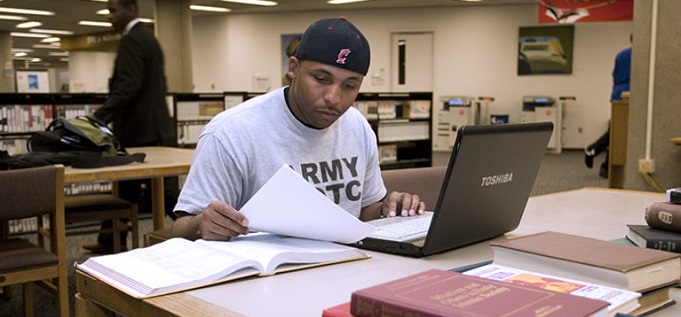A clearer CPL path for student veterans
By Ed Finkel
March 9, 2022
Virginia in recent months has upgraded its Credits2Careers portal aimed at adult learners, including the military who would like to attend community colleges.
It is prepared to go live with a second effort, the Transfer Virginia portal, which focuses a bit more broadly, although veterans can use either, according to Emily Jones-Green, coordinator of credit for prior learning with the Virginia Community College System (VCCS).
“There’s a designated spot on Credits2Careers that specifically says how it works for military learners,” she says. “We’re using their language directly on our main pages.”
Launched about five years ago, Credits2Careers, in which all Virginia community colleges participate, initially focused solely on the military but has since expanded, Jones-Green says.
“We’re still working on the industry certification piece,” she notes.
Each college within VCCS makes its own determinations of what credits are awarded, the same as with any certification or academic coursework from another institution, Jones-Green says.
“We are in the process of trying to have it be a little more standardized,” she says. “Instead of faculty at each institution, it would be a peer group from across the entire state that meets to review recommendations.”
Working on various pieces
Four-year institutions in the state have not gotten as actively involved, although they have agreed that credits awarded by community colleges can count for general education, at the very least, says Patricia Parker, director of Transfer Virginia, housed at the State Council of Higher Education. For major credits, however, “each institution will determine whether they will accept CPL [credit for prior learning] credentials,” she says.
Transfer Virginia, which will be fully operational in April with 35 schools and hopes to expand to at least 50 by year’s end, is focused on higher education, generally, whether students start at a two-year college or go straight to a four-year campus, Parker explains.
“The Credits2Careers portal is for students that definitely want to start with an associate degree, who are bringing either military or industry credentials,” she says.
Aiming for uniformity
Ohio began efforts related to military articulation after a chancellor’s directive in 2011 followed by legislation in 2014 that required the public system to evaluate military credit for college credit, says Jared Shank, senior director of military and apprenticeship initiatives and special projects for the Ohio Articulation and Transfer Network, housed within the Ohio Department of Higher Education.
Ohio’s transfer system is built on a common course numbering system between two- and four-year institutions, and the system has attempted to treat the military like an additional Ohio public institution, Shank says. Panels of faculty from community colleges as well as four-year institutions like Ohio State University and University of Cincinnati meet to decide whether a given military course passes muster for CPL.
“Military credit is evaluated equally amongst our 36 institutions,” he says. “If you have a military electronics course, and the ACE [American Council on Education] recommendation is six credit hours in DC electronics, every institution will get six hours.”
When states evaluate at the institutional level, that “allows for credit-shopping, and a service member is going to wonder, ‘Why is this different everywhere?’” he adds. “In Ohio, that’s something we’ve tried to eliminate, so it’s more uniform.”
The Transfer to Degree Guarantee search engine has several tabs to click on, including one for military veterans, Shank says.
“We looked at [other efforts] across the country to figure out how to display the most accurate information with what we’re doing in the state,” he says. “As we get new courses approved for statewide guarantee, they get added into that system.”
Getting faculty on board
Ohio, which participates in a multistate collaborative on military credit coordinated through the Midwest Higher Education Compact, also needed to spend time initially with faculty explaining how the system would work, Shank says.
“Unless a faculty member is a prior service member, they have no idea what the military does in an academic course setting,” he says. “They might say a course is only four weeks long, but in many cases those four weeks are 8-to-5, every day.”
The state network also needed to explain the ACE evaluations and how they work, Shank says, and faculty had many questions about how the system might affect program or school accreditation, whether regionally or by industry. But the state has received assurances on those fronts, and at this point “faculty aren’t questioning any type of academic rigor or accreditation,” he says. “Now it’s, ‘Can we get enough information to evaluate the course?’”
There’s more to the story! Read the full article in CC Daily.



